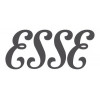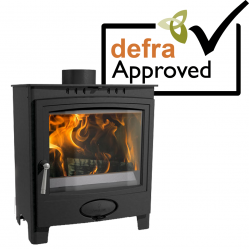OBSOLETE - Esse 700 Multi-Fuel Stove

Technical Details
| Product Title | OBSOLETE - Esse 700 Multi-Fuel Stove |
|---|---|
| Energy Efficiency | A |
| SIA Ecodesign Ready | No |
| Output (Nominal) | 9.5kW |
| Output (Maximum) | 10kW |
| Smoke Control (DEFRA) | Yes |
| Boiler Stove | No |
| Colour | Various Options |
| Flue Outlet Size | 150mm - 6in |
| Fuel | Multifuel |
| Height | 681mm |
| Width | 570mm |
| Depth | 420mm |
| Nominal Output (Range) | 9kW - 11kW |
| Width (Range) | 500mm - 600mm |
| Nett Efficiency (%) | 78.5 |
| Max log length | 400mm |
| Distance to Combustibles (Side) | 400mm |
| Style | Traditional |
| Centre of Flue to Rear | 130mm |
| Distance to Combustibles (Top) | 450 |
| Direct Air Kit Available | Yes |
| 12mm Hearth Compatible | Yes |
| Heat Shield Available | Yes |
File Downloads
Reviews
Defra Approved Stoves > 6kW and Over Defra Stoves

6kW and over Defra Stoves
Here we have displayed the best 6kW and over Defra approved stoves available on the market. Many of these stoves are available as wood only or multifuel options to suit your requirements and fuel types available, however some are classed as wood only and so it is worth checking with us prior to purchasing if you are wanting a large 6kW or over multifuel stove for burning smokeless fuels.
We supply a wide range of traditional and contemporary 6kW and over Defra approved stoves to suit the interior décor of your home, available in different sizes and finishes. These stoves are perfect for large city homes where space is not limited, and increased heat output is needed. It is worth noting that any stove over 6kW output will require an external air source by way of a direct air vent to the stove or an airbrick fitted in the wall near the appliance. As Defra approved stoves require a small but constant air supply to the burning chamber to prevent excessive smoke, an air vent is essential to prevent too much air being taken from the room for combustion.



